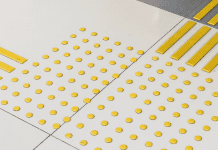The statutory role of principal designer has failed to deliver the impact envisioned by legislation. But Allan Binns, safety director at Ryder Architecture, believes that with some reinvention, “principal designer 2.0” can bring real value to projects
Since the inception of the Construction (Design & Management) Regulations 2015 (CDM), the principal designer role has struggled to find its place within the built environment.
Whether the role is misinterpreted, misunderstood or simply missing from our projects because we do not fully understand, or indeed wish to embrace, its purpose, the whys continue to detract away from the very sobering fact that this statutory role has failed to gain traction and deliver the impact the legislation hoped for.
By definition, the principal designer is the designer with control over the pre-construction phase of the project. This individual or organisation is responsible for planning, managing, monitoring and coordinating matters relating to health and safety in the design phase, ensuring that – so far as is reasonably practicable – the project is carried out without risk to health or safety.
In performing this overarching duty, a principal designer will support the client by collating the necessary pre-construction information, while collaborating with the design team to identify and mitigate foreseeable risks, passing all relevant information to the principal contractor prior to construction commencing.
Throughout the construction phase, a principal designer will continue to liaise with the principal contractor on matters relating to health and safety, collating any information relevant for inclusion in the health and safety file – the file which will contain safety information relating to the building’s use.
Appointing the principal designer early is critical to the success of the principal designer role and the project as design decisions made during the pre-construction phase have a significant influence in ensuring the project is delivered in a way that secures the health and safety of everyone affected by the work.
However, the reality is that principal designers are often appointed too late to have the desired impact, joining a project after critical decisions have already been made.
As such, their role is diminished from proactive to reactive, and at its worse to something purely administrative.
Even if a principal designer is appointed in a timely manner, they may still struggle to integrate with the wider project team, finding their contributions siloed, acting as a side matter at the start or end of a meeting rather than permeating discussion.
Reinventing the principal designer role
Educating people on the value of the principal designer role – beyond the statutory requirement to appoint one – is an ongoing process. However, those involved in the profession can do more than wait for the penny to drop.
I believe that the collaboration required between safety and digital consultants to successfully deliver upon the remit of the golden thread may provide insight into how the CDM principal designer role can reinvent itself to provide the value it sought.
The new information management requirements for high-rise residential buildings under the Building Safety Act 2022 dictate that – from October 2023 – building owners in England must create, hold and maintain a building safety case: a structured argument why a building is safe for occupation. To achieve this, clear information requirements must be set out at the start of a project, considering what building safety information will be required to progress through the Building Safety Regulator’s new gateways process.
With this commitment to a golden thread of information soon becoming commonplace, we may look to repurpose this approach, using best practice information management to drive CDM compliance and better integrate the principal designer role into a construction project.
Adopting common tools, languages and processes
It is time to say goodbye to the designer’s risk assessment spreadsheet and the cumbersome PDF of pre-construction information, and adopt the common tools, languages and processes of the other disciplines.
PAS 1192-6 already provides clear guidance on how health and safety information may be incorporated into a 3D model, identifying mandatory fields for risks as part of promoting a standardised approach. However, overseeing the design risk management process is just one element of the principal designer’s role, and if we are to add even greater value to a project – and indeed the industry – we will need to adopt a more holistic approach.
Principal designer 2.0 will be digitally enabled, setting out clear information requirements, not just for design risks but for pre-construction information, F10 notifications and health and safety files. In doing so, they will be able to report against established metrics, adding greater weight to conversations around compliance, while being able to better integrate and engage with the project.
At Ryder Architecture, we have already taken consequential steps towards this brave new world. In collaboration with our sister company, BIM Academy, we have developed and procured a range of digital tools including automated workflows and a cloud-based risk management software with a view to enhancing our principal designer offering.
While a principal designer’s competency will undoubtedly remain central to the effective delivery of the role, the ability to produce clear and relevant information requirements and use digital tools are ostensibly key to unleashing the role’s potential and adding value.
Allan Binns

Safety director
Ryder Architecture
Tel: +44 (0)191 269 5444

















